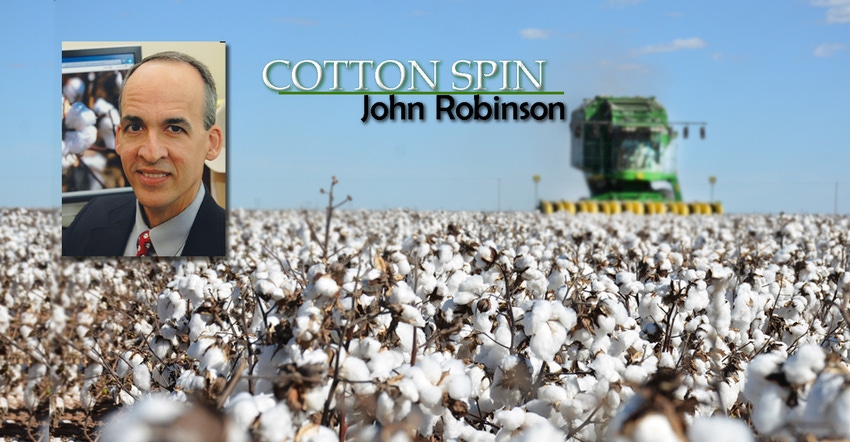
USDA’s November WASDE gave us very modest tightening in the 2021/22 crop balance sheet for world cotton. The new crop world numbers started off with roughly a million fewer bales in beginning stocks, mostly in India (-800,000) and Pakistan (-300,000). World production was raised 1.5 million bales, month-over-month, mostly in Brazil (+700,000), Australia (+600,000), Pakistan (+200,000) and the U.S. (+200,000). The world trade categories were raised less than 200,000 bales each compared to October. World consumption was raised 700,000 bales, mostly in India (+300,000), Pakistan (+200,000), Bangladesh (+100,000) and Mexico (+100,000). The bottom line was that world ending stocks were a very modest 200,000 bales higher, month-over-month, which is fundamentally price neutral in the monthly adjustment.
The U.S. new crop picture saw only a few, mostly expected adjustments. Forecasted U.S. cotton production was raised 200,000 bales, owing to a nine-pound increase in harvested yield per acre (to 880 pounds per acre). The month-over-month increase in production was spread across seven states, with Texas accounting for half of it. As in September and October, the basis for the yield adjustment was NASS’s objective yield field sampling, which in Texas involved 595 samples of 40 feet of row, counting bolls of various maturity (excluding small bolls). There were no adjustments to U.S. domestic use or exports, so the increase in production went straight to the bottom line, reducing ending stocks to 3.4 million bales. Both the month-over-month and year-over-year implications of this outcome are price neutral.
The minimalist monthly adjustments in this report were anticipated in the normal pre-report surveys. So, there was no reason to expect a strongly bullish reaction in ICE cotton futures. But curiously, that is precisely what happened following the report’s release on November 9. Why the intraday price rally? The reasons offered in the farm media include speculative buying in response to expectations of generally rising prices (i.e., inflation), and speculative buying to squeeze the relatively large number of commercials holding short positions. These motivations to buy cotton futures may continue, although the additional speculative expectation of uncertain U.S. production should be a fading influence.
There is also a historically large inversion in ICE cotton futures, with the ICE Dec’21 trading nine cents above the Jul’22 contract. The simple interpretation of this condition is that there is either excess near-term demand and/or tighter near-term supply compared to six months from now. In other words, the market signal is that these historically strong prices are temporary.
For additional thoughts on these and other cotton marketing topics, please visit my weekly online newsletter at http://agrilife.org/cottonmarketing/.
About the Author(s)
You May Also Like




